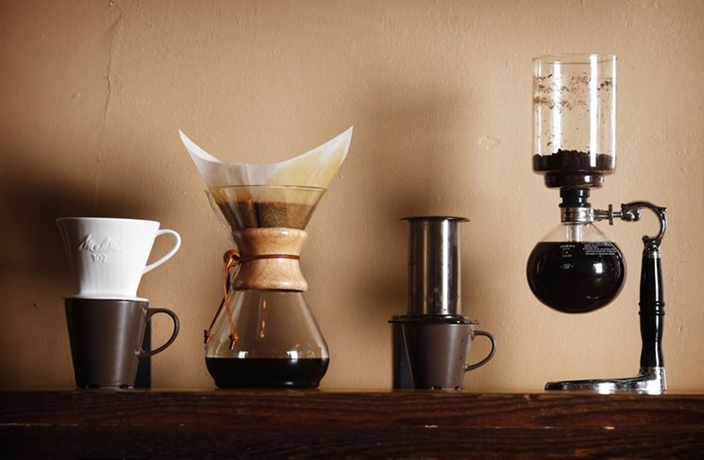3rd Generation Coffee; About and Techniques

Widely today, we hear about the concepts of ‘new generation coffee‘ or ‘3rd generation coffee‘. As the times changed and human beings turned to different tastes, the methods of preparing and consuming coffee have also changed, it would be impossible for coffee not to. So what is 3rd generation coffee? What is the difference between 1st, 2nd, and 3rd generation coffee and their brewing methods? We have compiled them all in this article for you.
1st GENERATION COFFEE
The first of the coffee generation was in the 1900s. The biggest aim of first-generation coffee is to prepare coffee as quickly as possible. ‘Those’ famous and very practical branded coffees belong to this generation. Due to the rapid life need of humanity, they go through a harmful and chemical process. Its preparation is very fast as intended, but it is quite insufficient in terms of taste.
2nd GENERATION COFFEE
Second generation coffee is still the most preferred type in daily life, although we hear more about the ‘3rd generation’. In fact, what we call coffee enjoyment usually comes from this generation. More developed than the first generation, famous coffee chains are in this category.
3rd GENERATION COFFEE
This trend is the point where coffee culture is most advanced. Here, brewing techniques are used according to different intensities, focusing on the properties such as the hardness and aroma of the coffee beans, away from the rush.
It is important to prepare the beans according to the technique
- Too thick: Cold brew
- Thick: French press
- Medium-thick: Chemex
- Medium: Paper filter coffee machines, Aeropress and syphon
- Medium-fine: V60 and short-term Aeropress brews
- Fine: Moka pot, espresso, and extra short duration Aeropress brews
- Very fine: Turkish coffee
Techniques
1.Hario V60
The v60 is a coffee brewing equipment that looks like an under-drilled cup. It is one of the most popular pour-over techniques nowadays. You should use a medium-fine grounded bean and cone-shaped filter.
How to brew?
Place the filter on the top. First, wash the filter with hot water, then get rid of the excess. Then, place the coffee in the filter, pour hot water until it comes down by touching the coffee particles, wait until it brews.
2.CHEMEX
Chemex is a pour-brewing technique with an hourglass-shaped flask, filters are 20-30% thicker than regular coffee filters which filter out bitterness, oils, and grounds. Also, you should use medium-thick coffee beans for this technique.
How to brew?
Heat the water until it boils, then let it sit for 30 seconds. Place the filter in the top of the brewer and wash with water to keep it in place, get rid of excess water. After placing the coffee in the filter, start pouring the water. After covering up all coffee wait for 45 seconds. This process is called ”bloom”. Then, continue to pour, try to avoid just pouring to the center or edges. After 2 minutes, allow all water to drain through the filter. Enjoy 🙂
Chemex and Hario V60 are very similar to each other, the differences between these two techniques are filter, amount of coffee, and rate of brewing (Chemex takes more)

3.AEROPRESS
Aeropress consists of a cylindrical chamber and a plunger with an airtight silicone seal. The propulsion power is used as in the french press. It is capable of making highly concentrated coffee, which is described as ‘espresso-style coffee’.
How to brew?
First, warm the inside with hot water. Then place the medium-fine ground coffee in it. Pour the water over the coffee for pre-brewing and mix. After a waiting time of 45 seconds, slowly add more water to the mixture by spreading it over 30-40 seconds. Finally, after placing the filter paper in the aerospace, place it on the coffee glass and press it for 30 seconds.

4.SYPHON
The upper two parts of the syphon, which consists of 3 parts in total, are the parts used to contain the coffee and water. The general principle is that the coffee remains in hot water for a while and then filtered. 250 ml of water and 15 g of coffee are used for one person. It is usually used in cafes and hotels because the cleaning and brewing process is laborious.
How to brew?
Put the water in the outer chamber and place the heating source. Water will start to go to the upper chamber. After boiling, add the coffee and stir well. Wait for a minute and remove the heat source. Because of the losing pressure, the brewed coffee will be collected in the lower chamber. Now you can serve your coffee 🙂 Here is a video to get an idea:
References:
- https://www.taftcoffee.com/blogs/blog/kahve-nedir-nasil-yapilir-nasil-uretilir-madde-madde-kahveye-dair-her-sey
- https://www.taftcoffee.com/blogs/blog/3-nesil-kahvecilik-nedir
- https://10layn.com/yeni-nesil-kahve-demleme-yontemleri/
- https://www.craftcoffee.com/how-to-make-coffee/chemex-brew-guide
- https://en.wikipedia.org/wiki/AeroPress
- https://kahhve.com/blog/ekipman/syphon-kullanarak-kahve-demleme/












